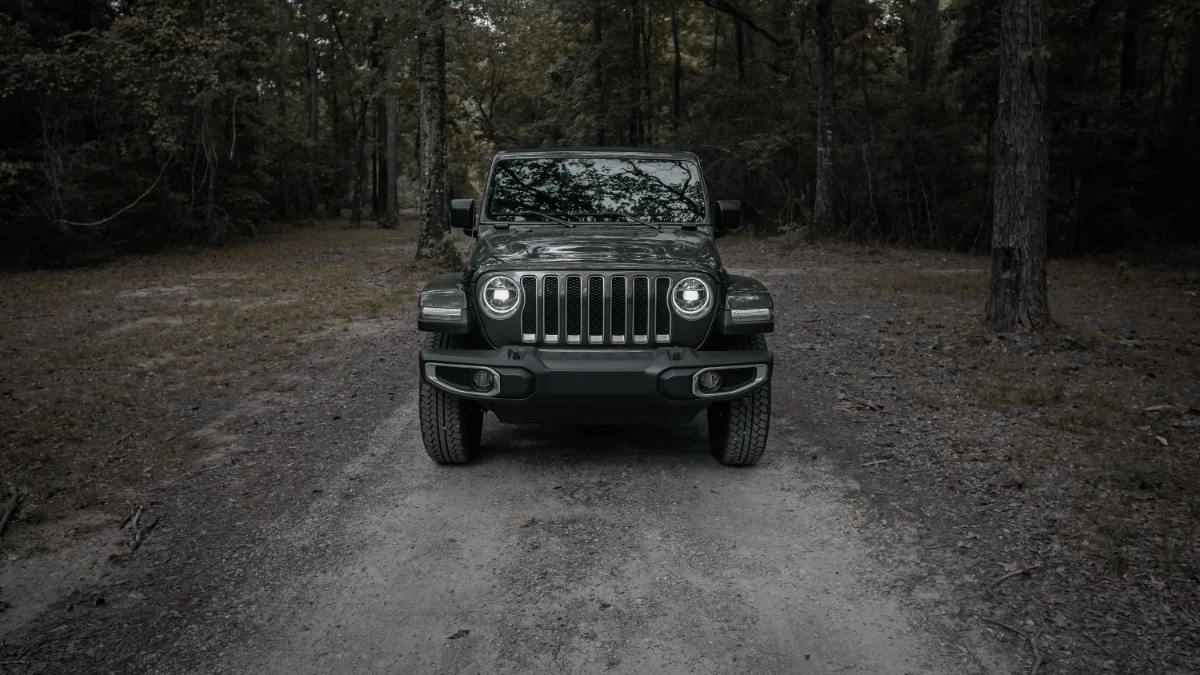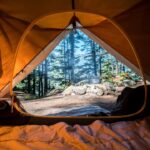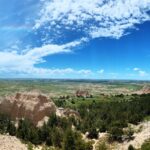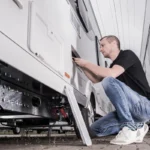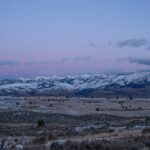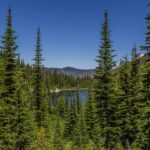Overlanding is a form of travel that has been gaining popularity in recent years. It involves self-reliant, long-distance travel to remote and often challenging destinations. Overlanders typically use off-road vehicles and carry all the necessary gear and supplies to be self-sufficient during their journey. The appeal of overlanding lies in the sense of adventure and escape from the hustle and bustle of city life. However, a successful overlanding trip requires proper planning, the right gear, and a suitable vehicle.
What is Overlanding and Why is it So Popular?
Overlanding can be defined as a self-reliant, long-distance journey that takes travelers to remote and often challenging destinations. Unlike traditional road trips or vacations, overlanding focuses on the journey itself rather than the destination. It allows travelers to explore off-the-beaten-path locations, experience different cultures, and immerse themselves in nature.
The popularity of overlanding can be attributed to several factors. Firstly, there is a growing desire for adventure and exploration among people who are tired of the monotony of everyday life. Overlanding offers a sense of freedom and excitement that is hard to find in other forms of travel. Additionally, overlanding allows travelers to disconnect from technology and reconnect with nature. In a world that is increasingly connected and fast-paced, overlanding provides an opportunity to slow down and appreciate the beauty of the natural world.
Essential Gear and Equipment for Overlanding
When embarking on an overlanding trip, it is crucial to have the right gear and equipment to ensure safety and comfort throughout the journey. Some essential gear includes a tent or rooftop tent for sleeping, a high-quality sleeping bag for warmth, cooking supplies such as a stove and utensils, and storage solutions for food and supplies.
Investing in high-quality gear is essential for overlanders. The gear should be durable, lightweight, and able to withstand various weather conditions. For example, a good tent should be waterproof and able to withstand strong winds. Similarly, a high-quality sleeping bag should be warm and comfortable, ensuring a good night’s sleep even in cold temperatures.
Choosing the Right Vehicle for Overlanding
| Vehicle Type | Pros | Cons | Cost Range |
|---|---|---|---|
| Jeep Wrangler | Off-road capabilities, compact size, easy to modify | Limited space, not ideal for long trips, expensive | 30,000 – 50,000 |
| Toyota 4Runner | Reliable, spacious, good off-road capabilities | Expensive, not as customizable as other options | 35,000 – 50,000 |
| Ford F-150 Raptor | Powerful engine, good off-road capabilities, spacious | Expensive, not as fuel efficient as other options | 50,000 – 70,000 |
| Mercedes-Benz Sprinter | Spacious, comfortable, good for long trips | Expensive, not as off-road capable as other options | 40,000 – 100,000+ |
Selecting the right vehicle is one of the most important decisions when it comes to overlanding. The vehicle should be capable of handling off-road terrain and have enough space to carry all the necessary gear and supplies. Factors to consider when choosing a vehicle include size, off-road capabilities, fuel efficiency, and reliability.
SUVs and trucks are popular choices for overlanding due to their off-road capabilities and ample storage space. SUVs offer a good balance between comfort and capability, while trucks provide more cargo space but may sacrifice some comfort. It is important to consider the pros and cons of each type of vehicle and choose one that best suits your needs and preferences.
Planning Your Route: Tips and Tricks for a Successful Trip
Thorough planning is essential for a successful overlanding trip. This includes researching potential routes, identifying potential obstacles such as road closures or difficult terrain, and creating a flexible itinerary that allows for adjustments along the way.
When planning your route, it is important to consider factors such as weather conditions, local regulations, and available amenities along the way. It is also helpful to have backup plans in case of unexpected changes or emergencies. Flexibility is key when overlanding, as conditions can change quickly and it is important to be able to adapt your plans accordingly.
Staying Safe and Prepared on the Road: Emergency Protocols and First Aid

Safety should always be a top priority when overlanding. It is important to carry essential safety equipment such as a first aid kit, fire extinguisher, and emergency communication devices like a satellite phone or radio. These items can be lifesavers in case of emergencies or accidents.
In addition to carrying the necessary safety equipment, it is important to be prepared for emergencies. This includes knowing basic first aid skills, having a plan in case of vehicle breakdowns, and being aware of the nearest medical facilities or emergency services in the areas you will be traveling through. Being prepared and having a plan in place can help minimize the impact of emergencies and ensure a safe and successful overlanding trip.
Finding the Best Campsites: A Guide to Overlanding Accommodations
One of the joys of overlanding is the ability to camp in remote and beautiful locations. There are various types of campsites available for overlanders, including public campgrounds, private campgrounds, and dispersed camping options.
Public campgrounds are often located in national parks or other protected areas and offer amenities such as toilets, showers, and picnic tables. Private campgrounds are typically run by individuals or organizations and may offer additional amenities such as electricity or laundry facilities. Dispersed camping refers to camping in undeveloped areas outside of designated campgrounds, where there are no amenities but allows for a more secluded and immersive experience in nature.
When selecting a campsite, it is important to consider factors such as location, amenities, and regulations. It is also important to practice Leave No Trace principles and minimize your impact on the environment.
Cooking and Meal Prep on the Road: Overlanding Kitchen Essentials
Having a well-equipped kitchen is essential for overlanders who plan to cook their own meals on the road. Some essential cooking supplies include a stove, pots and pans, utensils, and storage containers for food.
When it comes to meal planning and preparation on the road, it is important to consider factors such as storage space, cooking time, and nutritional needs. It is helpful to plan meals in advance and pack ingredients that are easy to store and cook. It is also important to have a system for organizing food and supplies to ensure that everything is easily accessible and well-organized.
Navigating Off-Road Terrain: Techniques and Strategies for Overlanding
Overlanding often involves navigating challenging off-road terrain such as sand, mud, or rocky trails. It is important to have the necessary skills and knowledge to navigate these types of terrain safely and effectively.
Different types of off-road terrain require different techniques and strategies. For example, when driving on sand, it is important to reduce tire pressure to increase traction and avoid sudden movements that can cause the vehicle to get stuck. When driving on muddy terrain, it is important to maintain momentum and avoid sudden braking or acceleration.
It is also important to be aware of potential hazards such as steep inclines or water crossings and take appropriate precautions. Having a basic understanding of off-road driving techniques and practicing them before embarking on an overlanding trip can help ensure a safe and enjoyable journey.
Overlanding Etiquette: Respecting Nature and Local Communities
Respecting the environment and local communities is an important aspect of overlanding. It is crucial to minimize your impact on the environment by practicing Leave No Trace principles, such as packing out all trash, staying on designated trails, and respecting wildlife.
When traveling through local communities, it is important to be respectful of their customs, traditions, and way of life. This includes being mindful of noise levels, following local regulations, and supporting local businesses whenever possible.
By being respectful and responsible travelers, overlanders can help preserve the natural beauty of the places they visit and leave a positive impression on the communities they encounter along the way.
Overlanding Communities and Resources: Joining a Supportive Network of Adventurers
Overlanding is not just a solitary activity; it is also a community of like-minded adventurers who share a passion for exploration and adventure. There are various online and in-person overlanding communities where travelers can connect with others, share experiences, and gain valuable knowledge and advice.
Online communities such as forums, social media groups, and blogs provide a platform for overlanders to connect with each other, ask questions, and share tips and recommendations. In-person events such as overlanding rallies or meetups offer the opportunity to meet fellow overlanders in person, attend workshops or presentations, and learn from experienced travelers.
Joining an overlanding community can provide valuable support, inspiration, and a sense of camaraderie. It is a great way to learn from others, share experiences, and make lifelong connections with fellow adventurers.
Overlanding is a growing trend in travel that offers a unique and adventurous way to explore the world. However, a successful overlanding trip requires proper planning, the right gear, and a suitable vehicle. By investing in high-quality gear, choosing the right vehicle, planning your route, staying safe and prepared on the road, finding the best campsites, cooking and meal prepping on the road, navigating off-road terrain safely, respecting nature and local communities, joining overlanding communities, and utilizing available resources, you can ensure a safe and enjoyable overlanding experience. So pack your bags, hit the road, and embark on an unforgettable adventure!
If you’re interested in overlanding and also enjoy capturing your outdoor adventures, you’ll definitely want to check out this article on the best gear for capturing your outdoor adventures. From cameras to drones and more, this article provides valuable insights and recommendations on the equipment you need to document your overlanding journeys in stunning detail. Click here to read the full article.
FAQs
What is overlanding?
Overlanding is a type of self-reliant travel where you use a vehicle to explore remote and off-road destinations for an extended period of time.
What kind of vehicle do I need for overlanding?
You can use any vehicle for overlanding, but it’s recommended to use a 4×4 vehicle with high clearance and good off-road capabilities.
What equipment do I need for overlanding?
You will need basic camping gear such as a tent, sleeping bag, cooking stove, and food supplies. You will also need recovery gear, such as a winch, tow straps, and a high-lift jack, as well as navigation tools, such as a GPS and maps.
Where can I go overlanding?
You can go overlanding anywhere that allows off-road travel, such as national parks, forests, and BLM land. It’s important to research and obtain any necessary permits before embarking on your trip.
How do I plan an overlanding trip?
You should research your destination, plan your route, and make sure you have all necessary permits and equipment. It’s also important to have a backup plan in case of emergencies.
What are some safety tips for overlanding?
Always let someone know your itinerary and expected return date. Bring a first aid kit and know basic first aid. Be aware of weather conditions and potential hazards, such as flash floods and wildlife. Follow Leave No Trace principles and respect the environment.
